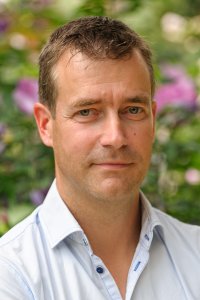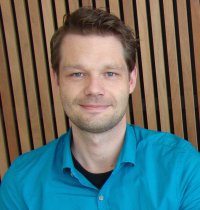Cutting CO2 through forest management

Forests store CO2, thereby forming carbon sinks. And wood also plays a role in the supply of bio-energy and the bio-economy. That role could be made much bigger, says special professor of European Forest Resources Gert-Jan Nabuurs. He carried out a study commissioned by the European Forest Institute EFI, and will be giving a lecture on it in Paris. ‘In the report we describe our calculations that with better forest management the European members states could achieve a further reduction of 400 million tonnes of CO2 per year. Forests currently store about 10 percent of current European emissions, and this could increase to 20 percent by 2030 or 2040.’
Nabuurs coined the term Climate Smart Forestry, the name of a smarter form of forest management designed to achieve this increase. ‘An example: in southern Germany there is now lot of forest that is vulnerable to insect and storm damage. It is aging and therefore grows more and more slowly. If it is gradually replaced with younger, more mixed forest that grows faster, the forest will sequester more carbon. As long as the wood that is harvested is used in new products, of course.’
The EU aims to cut CO2 emissions by 40 percent by 2030, compared with 1990. With smarter forest management 50 percent is feasible, says Nabuurs. He is optimistic about the conference. ‘What is new is that climate targets are no longer imposed from above. Countries set their own objectives, which makes the negotiations easier. And many countries address land use, including forestry, in their objectives.’
Storing carbon in the ground
The idea is simple: compensate for the rise in CO2 emissions by storing more carbon in the ground. Not buried deep down in the form of CO2 but as organic matter in the fertile topsoil. Good for the environment, good for the soil and therefore good for food security as well. This initiative by the French government is called 4/1000.
On the first day of the conference Wageningen president Louise Fresco will be consulting other large research institutions about the proposal. ‘We are going to draw up a declaration calling for attention to agriculture’s big potential contribution to solving the climate problem,’ she explains.
But how do you raise the carbon content of a soil? By adding more organic carbon, for example, explains Peter Kuikman of Alterra. And that can be done using simple farming practices. ‘Higher production leads to more roots and therefore to more organic carbon. But other things increase carbon levels too, such as minimal tillage, crop waste management and crop rotation.’ This is an area in which Kuikman has completed a European project (SmartSOIL). He does have reservations, though. No two soils are the same and 4/1000 is not feasible everywhere. ‘But it’s an excellent target. All the more so because some of the carbon you store comes from the soil in the first place through the breakdown of organic matter. So you are really putting it back where it came from.’
‘Enriching the soil with carbon is one of the main solutions to the climate problem,’ says Fresco. ‘Agriculture plays a big role in the implementation of the climate treaty at national level. That is why it’s a good thing that Wageningen will be present in Paris.’
Is there any point in adaptation?

Climate change is a fact; get used to it. Or, even better: adapt and make sure you make society less vulnerable to its effects. Increasingly, governments are focusing on this, suggests research by management expert Robbert Biesbroek. Together with Canadian colleagues he set up the network organization TRAC3. ‘Using new methods we are trying to systematically identify and follow adaptation policy so as to keep track of changes over the long term. And that includes negotiations such as those in Paris.’ TRAC3 developed the adaptation initiatives index as a way of expressing the progress countries make with adaptation in a figure. ‘We made an inventory of the adaptation measures that were reported between 2010 and 2014.’ The article about this was published recently in Nature Climate Change. The Netherlands, incidentally, scores somewhere in the middle range on this index.
Biesbroek is the first to acknowledge that the method is not infallible. One of the difficulties lies in defining adaptation. ‘There are a lot of different interpretations. Millions are invested in it, but it is not easy to justify those investments and demonstrate their effectiveness.’ For him, that is what Paris is about. ‘Ultimately we want to be able to say something about whether adaptation policy really does reduce vulnerability to climate change.’
Feeding Paris sustainably
 In the slipstream of the climate conference the Amsterdam Institute for Advanced Metropolitan Solutions (AMS)
In the slipstream of the climate conference the Amsterdam Institute for Advanced Metropolitan Solutions (AMS)
is running a workshop for students and young professionals in Paris. ‘In the Atelier Neerlandais about 30 international students will spend four days thinking up new concepts related to food supplies in the urban region,’ explains Arien Spijkerman of Alterra and AMS. Six of the students and one PhD candidate are from Wageningen.
The theme of the workshop is ‘Paris Food Futures’. It forms the first exercise in the AMS programme ‘Feeding the City.’ After several lectures about food and excursions in the Paris region, the participants will set to work in groups. Spijkerman gives an example: ‘At present food from outside the city is brought to one location at night and is distributed from there. At the same time food is increasingly being purchased online, bringing all kinds of new logistical trends in the city. So you could think up a new concept for getting goods from the producer to the customer.’ The results will be presented in short films and a publication.

